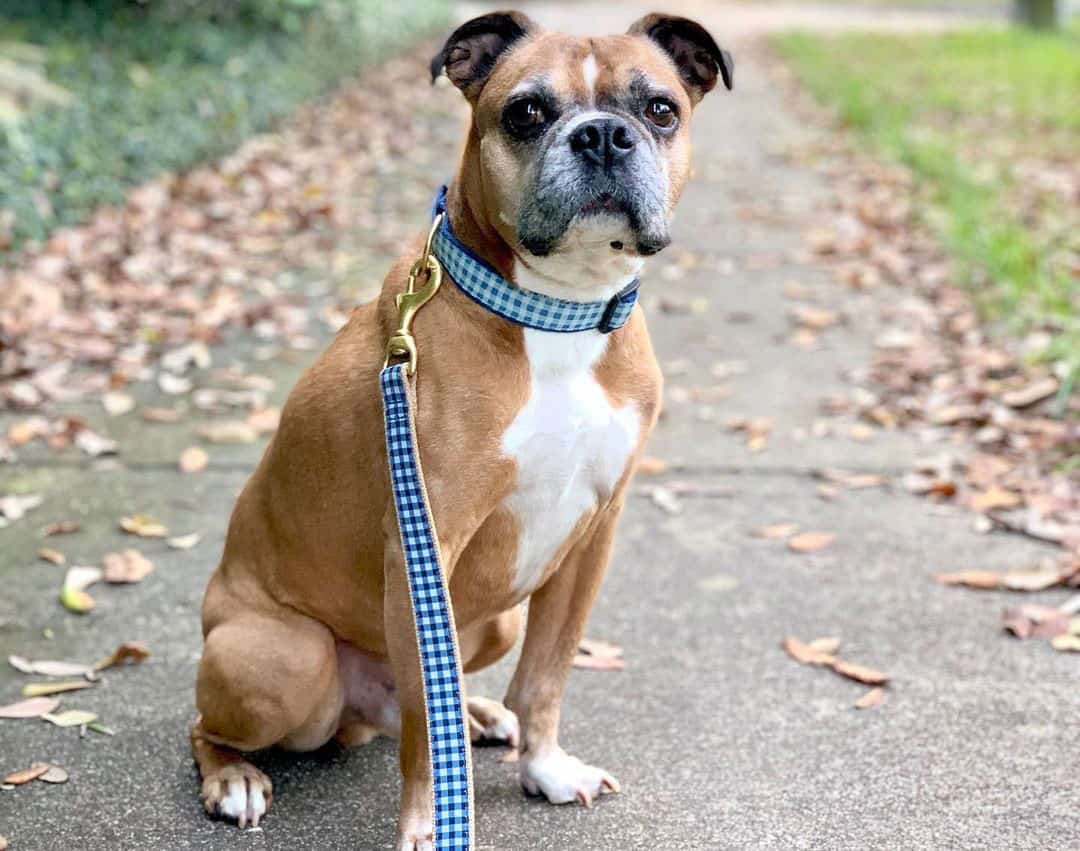
But, some Boxer dogs carry “white spotting” genes, which lay white patches on top of the fawn.Īnd for breeders, “white Boxer” has a very specific definition: a Boxer dog with white markings covering more than 30% of its body. Genetically, all Boxers’ base color is fawn. We’ll come back to these in a minute.Īnd finally, some Boxers have a black mask over their eyes and muzzle. In some places, the fawn might also be broken up by white patches. Sometimes the brindling is so dense it gives the impression of being a solid black coat, but it is always brindling. The fawn can also be overlaid by black stripes known as brindling. But like saying a human has brown hair, fawn can cover any shade from dark blonde to deepest mahogany, via a spectrum of tans and reddish browns. You can take a look at more Boxer fun facts here! Boxer appearanceīoxer dogs come in a pleasingly simple choice of colors.īoxers’ main color is fawn.

Mini boxer mix full#
There are a lot of rival theoriesĬelebrity Boxer owners include model Gisele, actor Jessica Biel and the dog whisperer himself Cesar Millan!īoxers can take up to three years to reach their full grown size, almost a year longer on average than other breeds. Nobody really knows why Boxer dogs are called Boxer dogs. The Boxer was one of the earliest dog breeds to be recognized by the American Kennel Club – the first breed standard was registered in 1904. Once the Boxer dog breed was established, people discovered they weren’t just good at hunting, but also made vigilant guard dogs and intelligent military dogs too.īoxers got their big break as companion pets at the end of WW2, when soldiers returning from Germany took them home as family pets. The aim was to consolidate all the traits they admired in those breeds, and fix them in one, definitive dog. To cut a long story short, the Boxer dog was derived from several popular hunting breeds of the time. It’s rather complex, and they admit you deserve an award if you can follow it! The foundation of the breed was meticulously documented at the time, and the American Boxer Club tells the story on their website. The Boxer dog traces its roots to Munich, Germany in the 19th century. History and original purpose of the Boxerįrom Boxer health to whether Boxers are good with children, here’s our complete lowdown on the Boxer dog breed.You can use the links to skip to the parts that interest you: Here’s a quick summary of the article content. We’ll look at all sides to give you the whole picture Boxer dog breed review: contents Like all dogs, there are good things and bad things about Boxer dogs. This is a short coated moderately large and active dog breed. Here are some quick facts about the iconic Boxer breed. Or scroll on down to find the detailed information you need about this loyal, charismatic breed of dog Boxers At A Glance What health problems do Boxer dogs have?.GSP pooches can be prone to certain health conditions like hip dysplasia, progressive retinal atrophy, or dermatitis, but these furry friends are generally pretty healthy.Find quick answers to your Boxer questions These hearty pups have an impressive life expectancy for larger dogs at 12 to 15 years. If you’re looking for a dog for your busy family, you’re sure to fall for the good-hearted and energetic nature of these adorable gundogs. GSPs crave family time and need to be in homes where they can always be in on the action. These enthusiastic pups truly encapsulate the “man’s best friend” adage with their unwavering loyalty and love of life. These furballs would appreciate homes with a large yard or nearby outdoor space where they can get some of their endless energy out. But truthfully, they’re pretty adaptable dogs who love doing just about anything.

You can bet on your GSP pup being one of the best dogs for hiking, as well as one of the best pets for running alongside you.

These furry friends have high energy levels, and they need frequent activity to feel their best. If you adopt a German Shorthaired Pointer or GSP mix, you’ll need to be active. GSPs like to stay physically and mentally engaged, so they’ll benefit from agility activities, puzzle toys, or accompanying you just about anywhere. However, it’s important to train your pooch early on since these pups are known to act as permanent puppies who don’t know their own size. German shorthaired pointers are incredibly smart and natural people-pleasers, so you won’t have any trouble training these canine cuties.


 0 kommentar(er)
0 kommentar(er)
